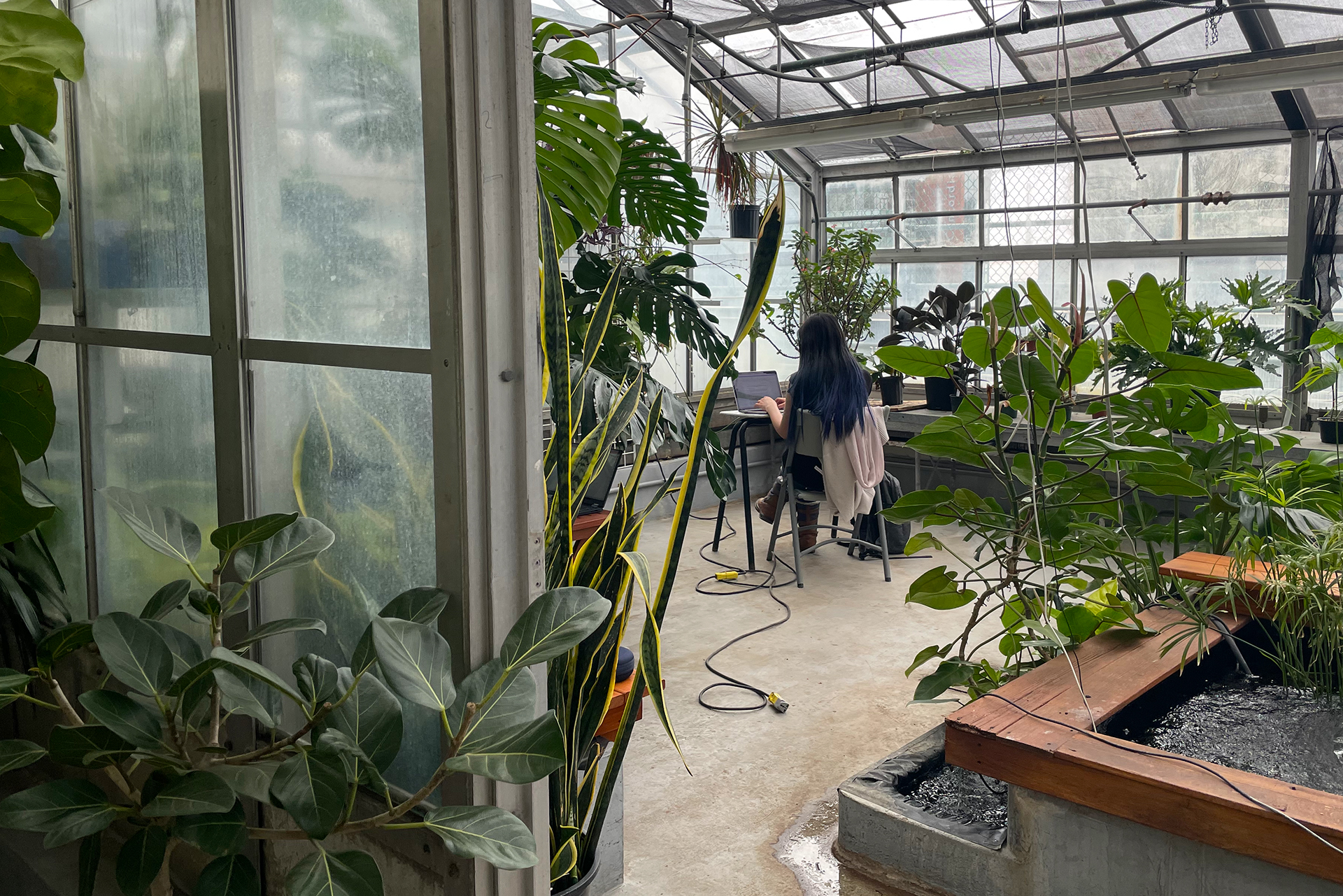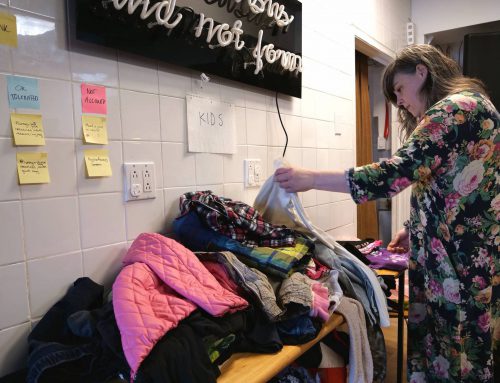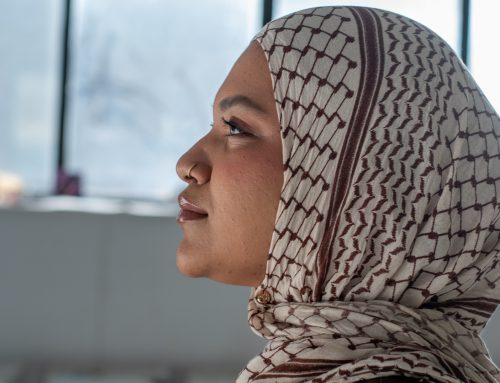BY Autumn Darey & Evan Lindsay
Maddisson Cummings Zabitsky has a problem on her hands.
“I’m freaking out because I have all these planters that I don’t know what to do with,” Cummings Zabitsky says. The Verdun resident will soon graduate from university and is planning to move to New York, but won’t be able to bring the eight planters with her.
Cummings Zabitsky started by buying indoor plants and says it made her much happier having the greenery around. Soon she was growing flowers outside and now has a variety of fruits, vegetables and herbs growing just outside her door.
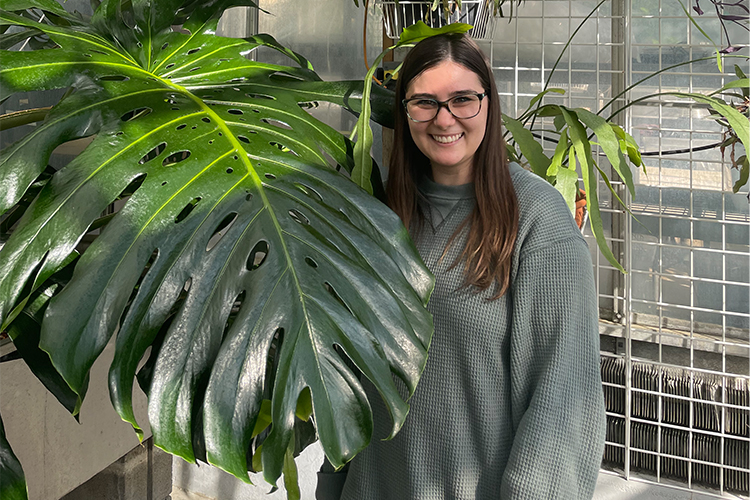
Maddisson Cummings Zabitsky, a plant lover. Photo by Autumn Darey.
“I try and grow chili peppers. I always have chives going, I also did cucumbers, tomatoes, and basil,” Cummings Zabitsky says. “And last year I started mint so I could make mojitos at home.”
There is rising concern about the impact of transporting food over hundreds or thousands of kilometres, and the rising cost of produce is affecting everyone.
Montreal currently has 45 farms, ahead of many other cities. Still, efforts are being made to increase the number of farms and green spaces around the city.
MontréalCulteurs is a program that connects people with properties and people looking to start urban farms, launched in the fall of 2021 with support from the municipal and provincial governments.
People may think that urban agriculture—like rooftop gardens—are the solution we’ve been ignoring, but most buildings aren’t equipped to deal with the extra weight that a rooftop garden brings with it.
“At the beginning of this project, I thought we could really develop a lot of projects,” says Camille Huot, Program Coordinator with MontréalCulteurs. “But when we do a structural analysis of the buildings, we realised that the load is often not sufficient to accommodate an urban farm.”
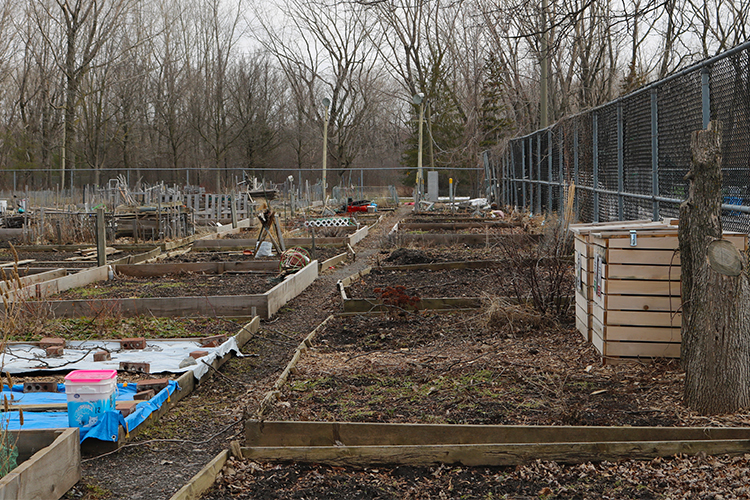
Parc Angrignon community garden in LaSalle, Qc. Photo by Autumn Darey.
Huot says that buildings would need to be updated in order to accommodate the extra weight load of a garden, as well as that of the snow.
While many think ‘large scale’ urban agriculture would lower the cost of food and make fresh produce more available, that’s not necessarily true. Huot notes that the prices vary greatly depending on the type of production and the type of produce.
The fight to protect greenspaces in Montreal heats up in Pointe-Claire as the city, protesters, and Cadillac Fairview clash. Video by Evan Lindsay.
Erik Chevrier, a professor of Food and Sustainability at Concordia, has been working to increase biodiversity and says that it’s been a struggle to get things like fruit trees planted for fear of squirrels, among other animals, being attracted by the fruits.
“People see fruit trees as things that actually produce waste,” says Chevrier. He believes that helping people to produce more food will be beneficial long-term.
“The more food that we have access to, the prices are going to start to reflect that also because people are going to be less dependent on grocery stores and more dependent on some of the stuff that they could actually do in their own yard,” he says.
Many would like the opportunity to grow some of their own food, but not everyone has access to community gardens, green alleyways or other spaces that would provide the space to do it.
“I think the city could do a lot more, even advertising to younger people,” Cummings-Zabitsky says, adding that it can be hard to get in touch with the city in order to get a plot.
According to the city, there are currently 96 community gardens on the Island. Most have fees involved for the plot or being part of the garden. Many are in the north-eastern portion of the Island.
This map shows which boroughs have community gardens listed by the city and their costs. Map by Autumn Darey.
People may move into growing at least some food to offset their grocery bills. Due to the conflict in Ukraine and restrictions imposed on Russia, the cost of fertiliser may rise, Chevrier explains.
“It’s going to be really expensive to grow food the way that industries have been pushing,” he says, adding that the high cost of fuel may push people to grow or seek locally grown products instead of imported ones.
Chevrier says the city could be doing more to encourage urban agriculture.
“We could actually do a lot better. The cities could actually be producing a lot more food, we could be doing a lot more with the resources that we have,” Chevrier says, “I think that the cities need to transition to producing a lot more locally to increase biodiversity in cities and to mitigate the instances of climate change.”
That may be easier said than done. Huot explains that each borough makes its own legislative choices.
“In Montreal, each borough has its own action in terms of producing and selling products from urban agriculture. Not all boroughs yet have legislation that is favourable to urban agriculture on their territory. Still a role for culture in general in Quebec, but it is still not necessarily possible to develop agricultural projects in the city. You always have to go through a request.”
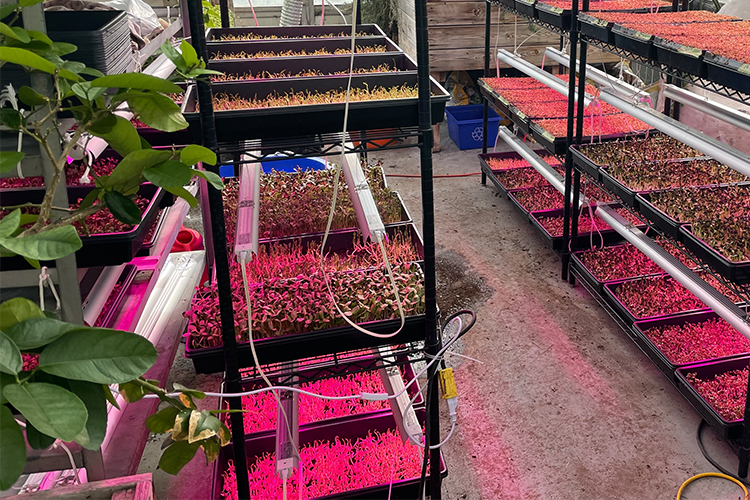
Micro-Greens growing at the Concordia Greenhouse. Photo by Autumn Darey.
There have also been concerns about the number of public green spaces in the city, with the Plante administration saying they plan to plant 500,000 trees and have paid millions to acquire land for the Great Western Park project. The park will be 3000-hectares, shared by Île Bizard Sainte-Anne-de-Bellevue and Pierrefonds–Roxboro.
While this may sound exciting, creating these spaces is not always as idyllic as it may sound. Converting areas to parks may not be the best solution, especially if they need to be developed.
“Some of these things sometimes come in conflict because if we want to beautify parks a lot of time that requires making paths and other things for people to access and sometimes it actually disrupted biodiversity and disrupts the animals and all of the life that’s there, so it depends on how it’s done,” Chevrier explains.
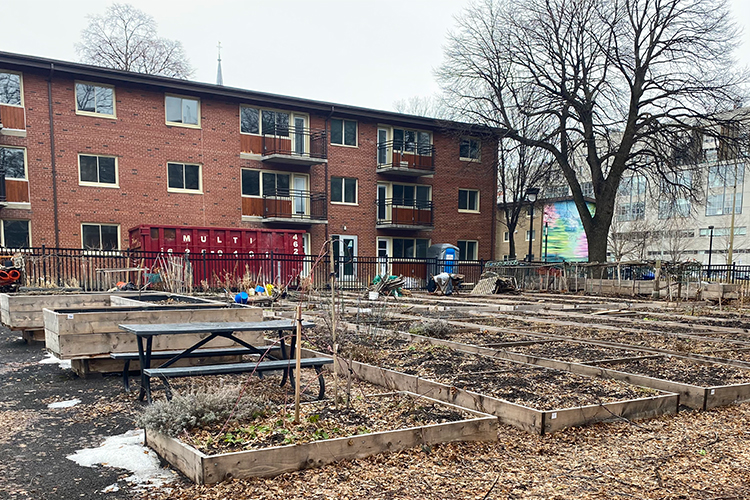
Harsh winter conditions make urban gardens difficult to maintain with many of the remaining closed through March and into early spring. Photo by Evan Lindsay.
When she’s able to, Cummings Zabitsky shares her small crop with her friends, family and neighbours, reducing waste and creating bonds with those around her by simply sharing what she has an abundance of.
There is optimism about the future of urban agriculture. Both personal and commercial gardens have room to grow in Montreal and people seem keen to nurture the trend.
“Urban agriculture has a lot of potential, but it will take a lot of funding and political will for the projects to materialise,” Huot says, “I think we are on the right track, especially indoor agriculture. I think it’s also a type of agriculture that is still little known to Quebecers, whether its greenhouse agriculture or vertical agriculture with artificial light, have great potential in Quebec.”
